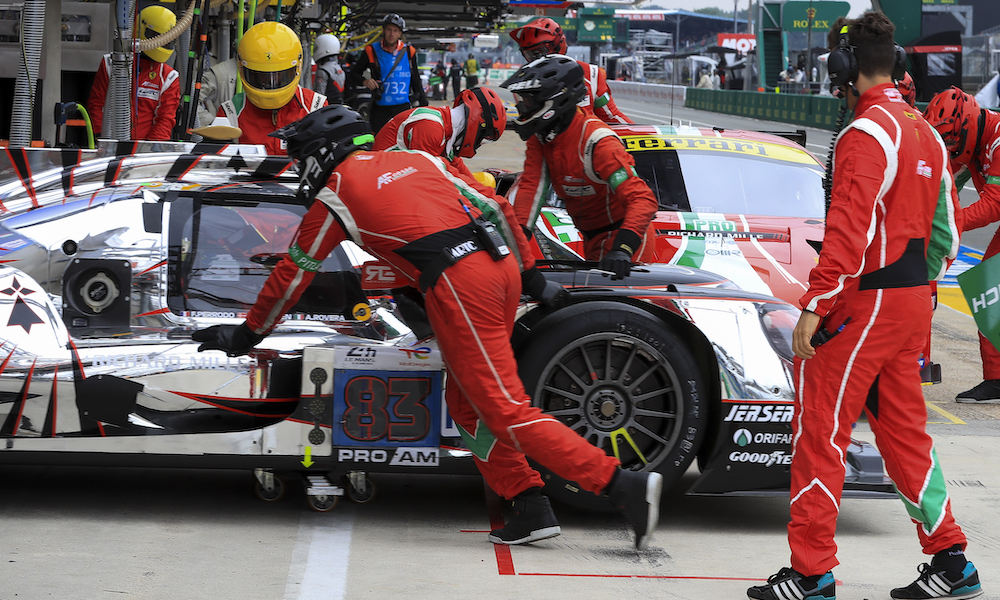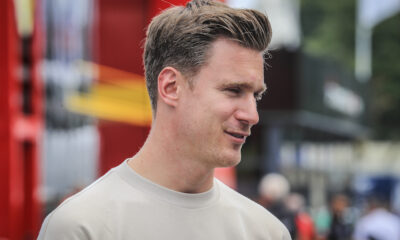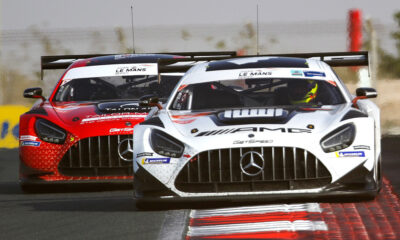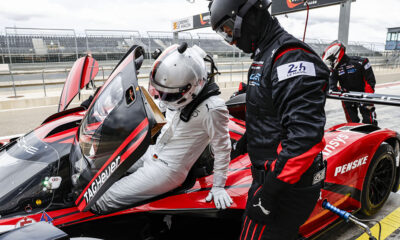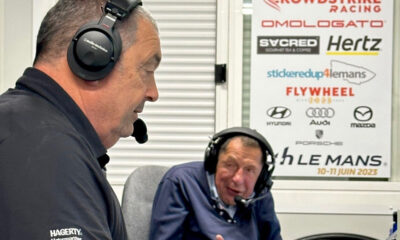Ferrari recently ran some of its GTE drivers in an LMP2 car to give them a “different vision” behind the wheel as part of the manufacturer’s preparations for its LMH program.
Ferrari has been focusing on its existing factory lineup for the development of the four-wheel-drive hybrid prototype, which is set to roll out for the first time next month.
As work on that car continued in Maranello, Ferrari arranged a test for some of its GTE stars at Vallelunga, as first reported by French publication Endurance-Info.
The car used was an AF Corse Oreca 07 Gibson fitted with Goodyear tires. AF will run the two-car Ferrari entry in the FIA World Endurance Championship Hypercar class and currently competes in the second-tier category.
The head of Ferrari’s Attivita Sportive GT department, Antonello Coletta, explained that the session was designed to give GT drivers experience behind the wheel of a prototype.
The Italian manufacturer has not named the race drivers for its LMH project.
Its factory GTE-Pro lineup consists of James Calado, Alessandro Pier Guidi, Miguel Molina and Antonio Fuoco. Nicklas Nielsen and Alessio Rovera, two factory drivers who race for AF Corse in LMP2, and Davide Rigon were also present.
“We organized a test for our drivers, but just to give them a different vision of the circuit, the seat height difference, the downforce,” Coletta told Sportscar365.
“It was just the idea of a different car, more similar to the Hypercar and less the GT. We tested all our drivers. Our factory lineup in GTE [Pro] drove the LMP2.
“At the moment we are focused on the same lineup. We will see in the future. It is not impossible for the future [to consider external drivers]. But we started with the same drivers.
“Our official team is involved in LMP2, so it’s normal that we used one of the AF Corse cars.”
Coletta insisted that the test was not an assessment to help determine Hypercar race seats.
“Honestly, not,” he said. “The results of all the drivers are more or less similar, although it is normal that Nielsen and Rovera are in LMP2 every day, so they were the reference at the start of the test.
“But the difference has been very little.”
No further LMP2 tests are planned, according to Coletta, with attention soon turning to track runs for the LMH car.
Ferrari has been tight-lipped on the technological progress of its new prototype, although it says it remains on time for a July rollout at Fiorano.
That presents it with an extremely tight window to conduct testing and be homologated in time for its targeted debut at the first round of the 2023 WEC season.
The WEC has not released its calendar for next year, although the 1000 Miles of Sebring is expected to kick things off once again in March.
Coletta described getting ready for the season-opening race as “the real problem” facing Ferrari in the second half of this year. The marque is under no illusions about the tight timeline, considering it is also developing a new GT3 car for early next year.
“[Sebring] is a very good race, but probably not the best first race for the championship,” he said.
“The nature of the circuit, and you need to send all the materials before. This is the real situation. The problem for time is the same as the other competitors, like Ferrari.
“If the 2023 championship starts at a European track, it is more simple than the U.S. or Asia.”
Asked if Ferrari would consider debuting its LMH at the first European race of the season, which this year took place at Spa in May, Coletta said: “Yes, we would consider.
“But we might not have a chance. We are realistic, and we need to be realistic.”
Coletta noted that Ferrari, like most automotive companies, has been impacted by supply chain issues, particularly on electronic and aluminum parts for its LMH car.
“The supply chain problem is the transversal problem in every world,” he said.
“It is normal that we have some problems. I hope to [have] resolved all of these problems before the start of the next season, because we need to assemble more GT3 cars, the Hypercar, and we need spare parts for next season.
“I think that another problem we have on the table, apart from the result of the car, is to have the parts to make the car. This is a new challenge in the challenge.”


